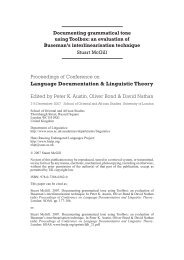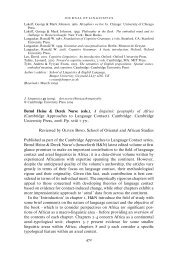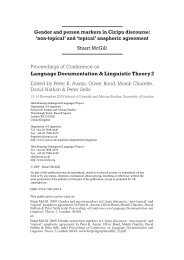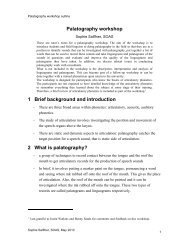Field guide to static palatography
Field guide to static palatography
Field guide to static palatography
Create successful ePaper yourself
Turn your PDF publications into a flip-book with our unique Google optimized e-Paper software.
Recording tips<br />
It’s best <strong>to</strong> start with linguograms, i.e. with painting the palate <strong>to</strong> look at the part of the <strong>to</strong>ngue<br />
that is involved in the pronunciation. That’s because it may be that after a few pala<strong>to</strong>grams the<br />
<strong>to</strong>ngue doesn’t get very clean anymore and there simply isn’t enough contrast for you <strong>to</strong> see<br />
anything.<br />
If you are recording with a video camera, it is best <strong>to</strong> just start recording and let the camera run,<br />
that way you don’t miss any words and don’t have <strong>to</strong> wait or worry. If you take pho<strong>to</strong>s with a still<br />
camera, be ready <strong>to</strong> take pho<strong>to</strong>s the moment the speaker finished pronouncing the word and get<br />
a number of shots from all angles of the <strong>to</strong>ngue.<br />
If you can, let one person do the recording and note keeping and one person do the instructing,<br />
painting and cleaning.<br />
For each pho<strong>to</strong> you take, write down the test word and the speaker.<br />
7












